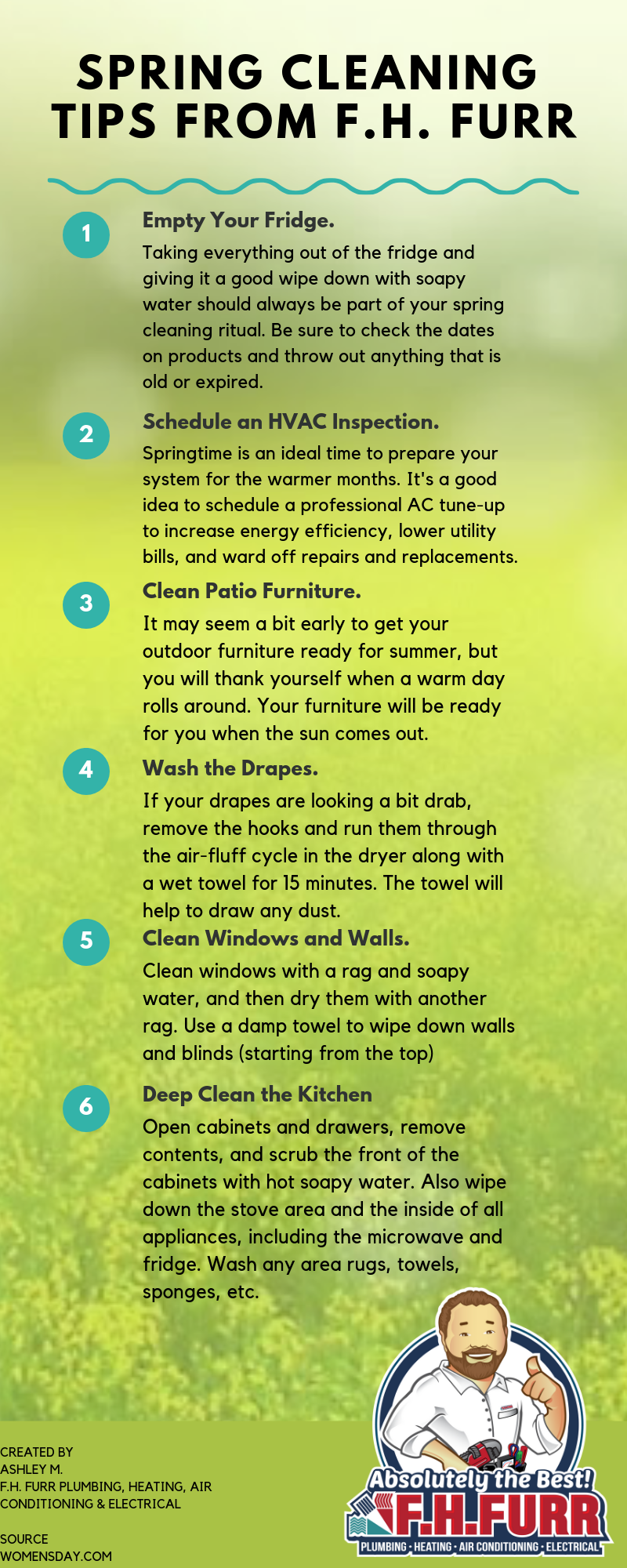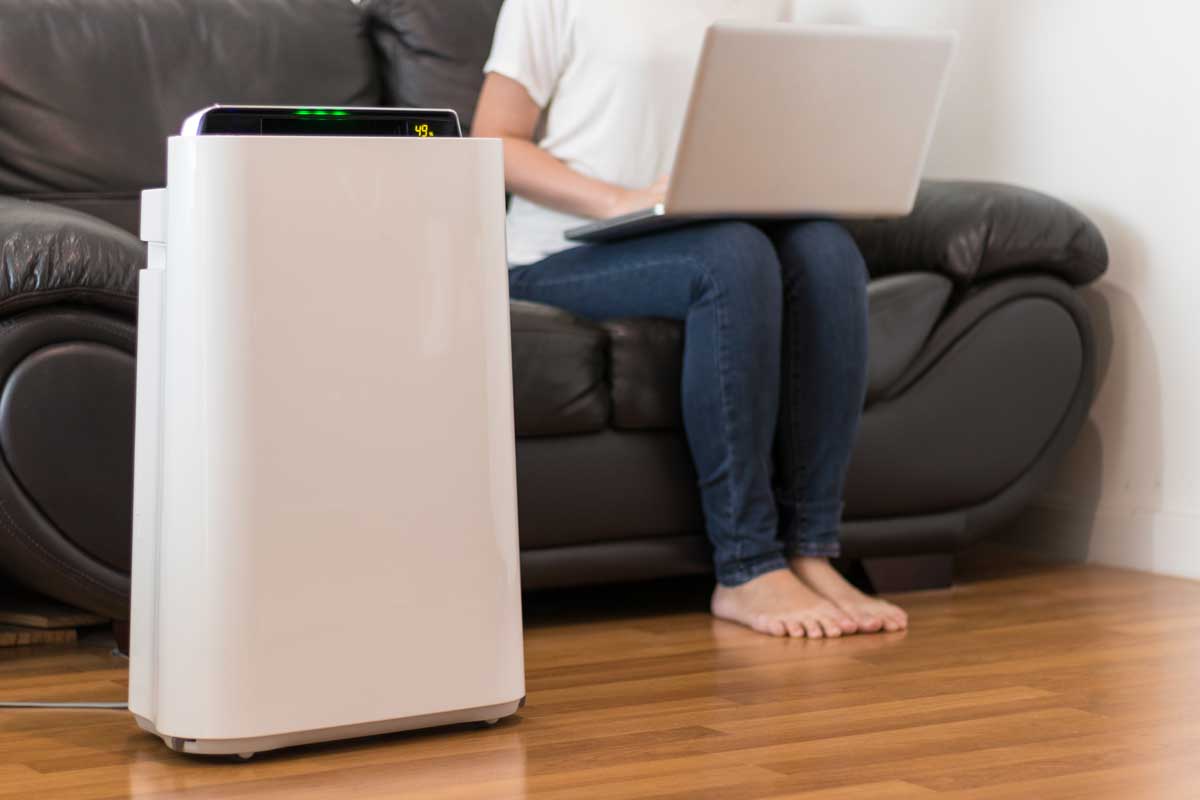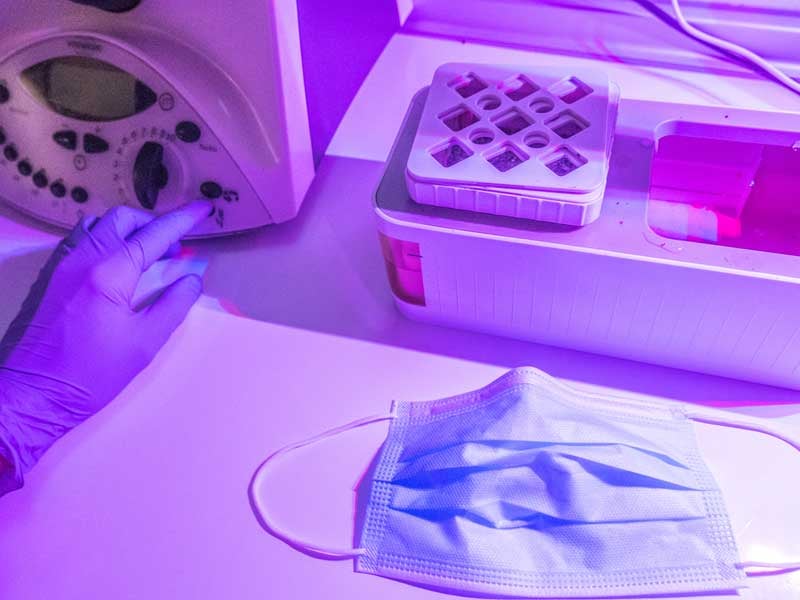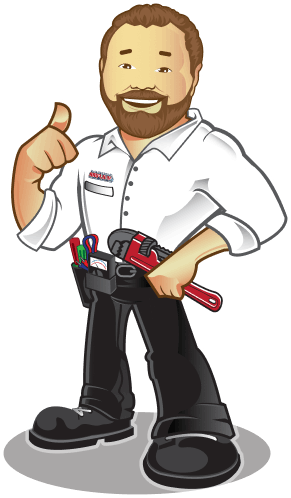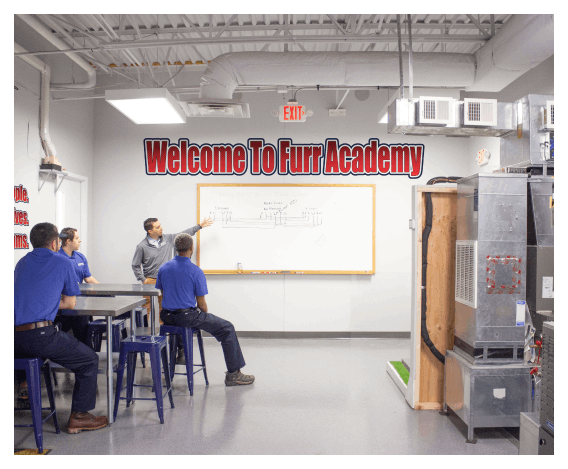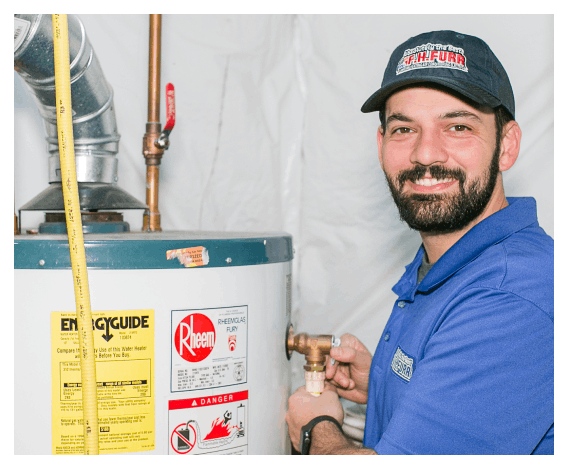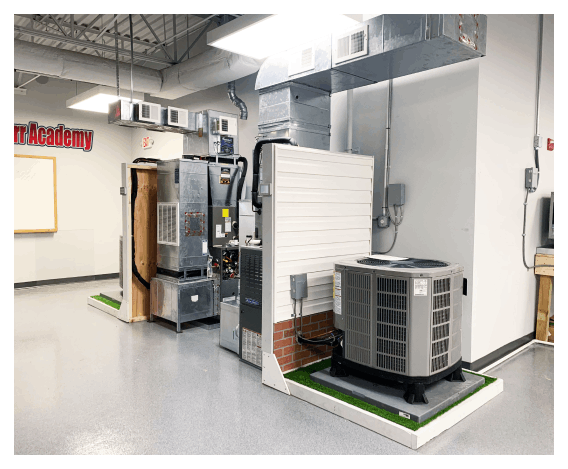There’s been quite a lot of research coming out lately about the power of UV light and its disinfecting properties. This is something that we’ve known for a while, which is why we install UV-C air cleaners in our customer’s homes…
If you’ve been interested in experiencing cleaner, fresher, and healthier air, you might have started researching UV light air cleaners. If so, you’ve likely noticed many products are out there. A simple Google search will lead you to pages upon pages of shopping options, from tabletop UV lamps to heavy-duty air purifiers that sit in the corner of a room, whirring loudly and taking up space. So with so many options to choose from, how do you know what the best type of air cleaner is for your home? When you narrow it down, there are two types: portable and whole-home air cleaners. Here are a few pros and cons to help you choose the right UV air cleaner for you!
Portable UV Air Cleaners
Portable air cleaners have their benefits but have some pretty strong drawbacks! Take a look at the pros and cons of these purifiers:
Pros:
Budget Friendly: Variety of price points, from $16 to $800, you’re sure to find some type of portable system that is in your price range.
Convenience: It’s all in the name; these portable machines are simple to use, just plug in and place on a tabletop, or in a corner, depending on the size.
Travel Options: Depending on what you purchase and your travel plans, portable options allow you to get fresher air wherever you call “home” during a trip.
Cons:
Small-Space Effects: These portable machines are made to purify the air surrounding them. While they can certainly provide some cleaning within a small room or confined space, the air will always be in danger of contamination since the rest of the house is still filled with dirty air. Essentially, they are less effective than a Whole-Home system.
Noisy: These machines can get noisy. Depending on the type you purchase, you could be in for a distracting new appliance.
Buyer’s Remorse: It’s hard to know what system will actually work. When you purchase a system from a reputable HVAC company, you have certain guarantees that your system will do what it says; when making a purchase on your own, you’re left to hope that your purchase will do the trick. Remember, you get what you pay for.
Whole-Home UV-C Air Cleaners
Whole-Home air cleaners are a popular option, but it’s important to know the facts. Doing your research on any home comfort investment is important.
Pros:
True Whole-Home Purification: When you have an EnviroAire indoor air quality UV-C Whole-Home In-Duct Air Purifier installed, you’re eliminating 99.9% of odors, 99.03% of viruses, 98.85% of bacteria, and 78.85 of mold…throughout the entire home. Since it filters the air as it’s passing through the ducts, the air is cleaned before it’s ever dispersed into your home. That means there’s no chance of contaminants getting into your lungs. It improves your entire home’s indoor air quality, not just one area.
Backed By Science: UV-C light is utilized in the air purification systems we install, that’s because it’s scientifically proven to be the most powerful form of UV light. Its entire job is to target and eliminate harmful pollutants in the most effective format.
Extends The Life Of Your HVAC System: Since it’s clearing out the air in a dramatic way, your HVAC system pumps the air with less effort. This smooth functioning allows it to have fewer breakdowns and a longer system life.
Cons:
Price: As one of the best residential air cleaners on the market, EnviroAire indoor air quality UV air cleaners will cost more than a $20 UV lamp. Determine if cleaner air and improved health are worth the investment to you.
Installation: Because the system is located in your ducts, it needs to be installed by professionals. While this is generally a quick and simple process, and many view the system’s invisibility as a benefit, it can be inconvenient if you’re looking for a plug-and-play system.
You’ll Be Spoiled: Alright, we admit, there aren’t a lot of cons to a Whole Home air cleaner, but once your home is pumping fresh air for the first time, you’ll notice the difference when you stay someplace else for vacation or an overnight visit.
While we at F.H. Furr recommend Whole Home UV air cleaners for our customers, especially people with allergies or severe health issues, it’s up to each individual to make their decision based on what’s best for them. If you have questions about how an EnviroAire indoor air quality UV system could clean the air in your home, check out the video below, and remember to call on us when you’re ready to install your air cleaner!
Disinfectant is in high demand these days. With people clamoring for hand sanitizers and aerosol sprays in grocery stores, one might be wondering; what is the ultimate form of disinfectant?
Priorities have certainly changed over the past few weeks and maintaining health, distance, and sterilization have risen to the top of everyone’s list. Most are doing their part to stay home as much as possible, and many states require residents to wear face masks while shopping for essentials. According to the Centers for Disease Control and Prevention (CDC), most N95 face masks used by health care workers are designed for single-use, to be worn and then thrown out after they’ve been contaminated with germs throughout the day. But with a shortage of quality masks, many are left wondering how to keep their masks clean enough to reuse.
Last week the CDC released new guidelines for using UV germicidal decontamination methods in emergency situations to kill deadly viruses without harming the mask’s filtration abilities. UV light is already commonly used in hospitals and other areas that require heavy sanitation due to its intense germ-killing properties. With this in mind, the CDC is working to discover more ways to utilize its power. While we know that UV light has been used in home air purification systems to effectively eradicate germs, toxins, viruses, and allergens in the home’s air, many people are just now learning about UV light and are wondering exactly what it is and how it works…
What Is UV Light?
According to NASA, Ultraviolet (UV) light is a form of radiation that is invisible to the human eye. As an invisible part of the “electromagnetic spectrum,” its electromagnetic radiation wavelengths are shorter than the violet end of visible light, making them impossible for our eyes to register and see.
While UV rays are invisible, they’re extremely powerful. Have you ever sat outside for a few hours on a cloudy day without sunscreen, thinking you’d be fine, only to realize you got a terrible sunburn? That’s the power of UV rays! Fortunately, the atmosphere of the Earth blocks the transmission of seriously dangerous levels of ultraviolet light.
There are three types of UV light; UV-A (lowest energy), UV-B (medium energy), and UV-C (highest energy). UV-C light can be the most damaging if used incorrectly, but is also the most powerful when harnessed for proper use.
How Does UV Light Work To Disinfect?
UV light penetrates the cells of bacteria, protozoa, germs, and viruses, absorbing the DNA or RNA that contains their genetic code and damaging it. Once harmful microorganisms are exposed to the germicidal wavelengths of UV-C light, they are rendered incapable of reproducing and infecting.
UV light has demonstrated its germ-killing power over the years, fighting pathogenic organisms responsible for viral and bacterial diseases like polio, typhoid, and cholera. This makes it a promising option for future disinfecting efforts.
Should I Be Disinfecting My Own Mask?
If you’re not a health care worker wearing an N95 mask on the front lines of this pandemic, you don’t need to take these serious steps. The CDC has recommended that if you are one of the many who are simply trying to weather this storm, pick up groceries without getting infected or passing on a potential infection to anyone else and cover your face with a cloth that can be laundered at home.
Be Smart…
Recently, The World Health Organization put out a warning stating that UV lamps should never be used to sterilize hands or any other part of your skin. Improper use of UV light could result in loss of sight, skin irritation or burning, and even cancer. While UV-C light is a great disinfectant, it should be used in safe, trusted formats like air purifiers until more testing is concluded.
New research is happening, but that doesn’t mean you should go out and purchase every UV wand or tool you see on Amazon. UV-C light might very well be the ultimate disinfectant, but it must be used in a specific way to be both truly safe and effective. For now, consider protecting your home, where you’re spending most of your time, with a trusted UV-C light whole home air purifier. Stay informed, stay healthy, and stay safe!
As summer swiftly approaches, you’ll begin to notice that dreaded DC Metro Area humidity seeping into your home. According to the Environmental Protection Agency (EPA) the ideal level of humidity in the home is 45%, but around here that level is nearly impossible to achieve as temperatures rise. When you ignore that excessive humidity and turn up your cooling to compensate, your utility bills will soar, and this is why so many homes are so expensive to keep cool during the summer months. A Whole-Home dehumidifier can help to create a more balanced environment while minimizing contaminants like mold and mildew, improving your indoor air quality in the process.
Wondering how you can tell if your home is overly-humid? Here are 6 ways to spot a dire need for a dehumidifier in your home:
1. Mold Spots—one of the easiest signs to see are mold spots. They are a high indicator of excessive humidity. This is a dangerous problem and can spread quickly, causing health issues and decreasing the value of your home.
2. Condensation Buildup—if you notice that the windows of your home are covered with beads of water or a vapor-like fog on the glass, you have a room with too much moisture. Your home’s humidity is working overtime!
3. Musty Odors—an old or musty smell in your home almost always means that mildew and mold are present. These contaminants thrive on moisture, which starts to collect in areas like basements, garages, and crawlspaces. This can be unappealing as well as dangerous for the health of the homeowners.
4. Water Damage Stains—water stains along your walls and ceilings are a sign of excess moisture. Be sure to have a professional inspect water stains to be sure you don’t have pipe leakage. If you see the damage, the water is already present and a dehumidifier will help begin the drying-up process!
5. Rotting or Buckling Wood—wood retains moisture and with an overload, it will begin to buckle and rot. Rotting wood attracts unwanted pests like termites, and the damage can be both internal and cosmetic, causing you to consider expensive remodeling. Even musical instruments like pianos, harps, or cellos can fall victim to this humidity issue.
6. Worsened Allergy Symptoms—allergy-prone homeowners will notice a significant increase in allergy troubles due to their indoor air quality. Excess moisture in the air breeds airborne allergens like dust mites and mold spores. If your allergies act up while you’re inside, you likely are experiencing poor indoor air quality. Humidity levels can also cause simple discomforts like chapped lips and more serious issues like respiratory breathing problems for those with asthma or chronic illness.
You don’t have to go to extreme measures to get improved indoor air quality in your home, you can maintain it by getting a whole-home dehumidifier installed! Call on the experienced HVAC technicians at F.H. Furr to keep your home cool, safe, and cost-effective!
After several months of cool winter weather, spring is finally here, and most of us are doing our best to get outdoors and enjoy some of nature’s beauty. Yet, with social distancing in effect, we find ourselves in our homes far more than we’ve ever been. When those springtime allergies are at their worst, all you want to do is crawl into your bed, hoping for some relief! But many homeowners are noticing that their allergy symptoms don’t improve once they’re in their house, in fact, many are finding that their symptoms are actually worse inside!
So if your home is where you’re supposed to feel the most comfortable, how do you get itchy, watery eyes, running nose, and incessant sneezing to stop at your door? Here are 3 simple tips to improve your indoor air quality and help bring you relief from your warm-weather allergy symptoms, while also improving your health all year long.
1. Keep Things Clean
While most homeowners work to keep their homes tidy, sometimes it can be difficult to find the time to perform a good cleaning. During allergy season, though, it’s important to make the time to really clear out dust and allergens from your space.
Some simple ways to keep toxic spores at bay is to vacuum daily, dust your surfaces regularly, change your sheets at least once a week, and wash blankets that are used often in your living room. If you have pets, be sure to brush their coats and bathe them, or use pet-cleaning wipes to clear off pollen from their coats after they’ve been outdoors.
2. Change Your HVAC Filters
Although it’s tempting to open the windows and let the spring air fill your home, don’t do it! It’s better to turn on your air conditioning to prevent pollen from entering through your windows. With that being said, if your HVAC filters aren’t clean, they’re allowing pollen pulled from the air outside to be distributed through the air and onto surfaces you touch regularly.
Changing your HVAC filter is necessary for your system to run effectively, and depending on your filter, it should be changed every three months. For additional protection, consider switching from store-brand filters to a finer filtration system, like EnviroAire IAQ’s 1-inch polarized media air cleaners. These filters are designed to trap far more than average filters can, and they fit in your HVAC system’s current filter track.
3. Duct Cleaning
Your duct system is located in the ceilings above you, taking conditioned air throughout the home and delivering it into each room. Do you know the last time the inside of your ducts were cleaned?
If the answer is no, or if it’s been over five years, you NEED to get your ducts cleaned! Over time, ducts become layered with dust, grime, and debris that are released into your home from your supply registers. This can aggravate your allergy symptoms. Ducts can also easily become infested with vermin, adding a whole new health reason to clear those ducts out!
These tips, coupled with over-the-counter allergy medications and eye drops, can help allergy sufferers breathe easier and be more comfortable this season! Call on F.H. Furr’s trusted HVAC technicians to help you improve your indoor air quality this spring!
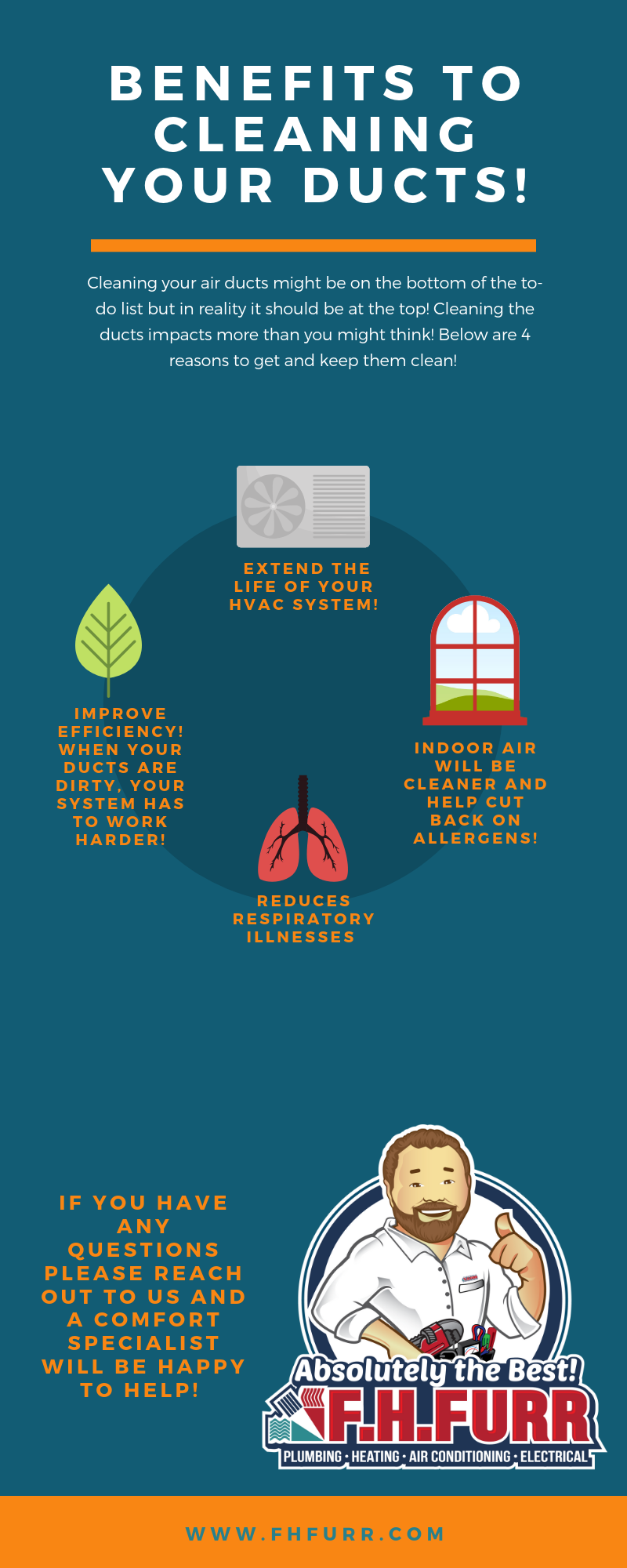
Humidity plays a huge role in the comfort of your home and family. The recommended indoor relative humidity level is 45%, yet the average Northern American home can be four times below that recommended level! When you combine existing low humidity levels with the home heating season, it can result in a myriad of indoor problems!
Are you noticing cold-like symptoms that just won’t quit, static electricity and higher energy bills to boot? Overly dry air absorbs essential moisture from your body as well as items in your home, it can cause health issues as well as damage to your home!
Here are a few signs that you might be experiencing a lack of moisture or humidity in your home:
- Health issues—many studies show that activity levels of viruses increase as temperatures and humidity levels decrease. This means that low humidity levels in your home increase your chances of getting a virus. If you’re experiencing symptoms like dry skin, nosebleeds, and a sore throat, you’re likely suffering from low humidity. Asthma sufferers will also notice an increase in their usual symptoms.
- Damage to your home—when the air is too dry, your home’s wood flooring, furniture and even musical instruments are susceptible to warping, splitting, and even cracking. If you notice that your floors are making additional noise during the dry season, or you see visible cracks in your walls and ceilings, then you need to consider a boost in your humidity levels—stat!
- Static electricity—everyone hates static! It’s rampant in the winter, and if your home is low on moisture, it can cause dry skin, clothing cling and even an electrical charge through your hair. Electrical problems also make static electricity dangerous and unhealthy.
At F.H. Furr, our knowledgeable and certified technicians are trained to handle your home’s humidity levels and they can install a whole home humidifier that works for you!
Unlike portable humidifiers that you might use for one room, whole home humidifiers provide moisture throughout the entire home, creating a more comfortable, healthy, and safe environment! Don’t hesitate to give us a call, we can find a whole – home humidifier that is perfect for your family’s needs!
When looking to upgrade your HVAC system filter, you might see the term “MERV Rating” in your research. What are MERV ratings, and why are they important?
Let’s start at square one. MERV stands for Minimum Efficiency Reporting Value and it sets the standards for the overall effectiveness of air filters. The MERV value determines the amount of this dust particles and pollutants that are getting through the filter and into your home. Filters can have a wide range of MERV ratings, the higher the rating, the better the filtration!
Common filter particles that are tested: pollen, dust mites, mold spores, carpet fibers, dust, pet dander, bacteria and tobacco smoke; since these particles are what typically give people daily trouble.
Filters with a higher MERV rating capture particles and pollutants at a much higher rate, which means they should be changed every 3 months. Changing the filter every 3 months might sound like a hassle, BUT we spend about 90% of our time indoors, so having clean air to breathe is a must!
An EnviroAire Filter has a 97% capture rate at .3 microns. On the MERV rating scale, it doesn’t get much cleaner than that. In fact, the EnviroAire Filter is considered hospital grade ranking between 16-18.
Since the capture rate is above the home quality standard, you might be asking, “How does it work?”
As the air from your home is pulled into your HVAC system, sub-microns become polarized. Once they’re polarized, they have a magnetic pull toward other harmful particles, attracting spores to themselves to create larger contaminants. These large molecules are then trapped on a disposable, low-static polarized media pad within the filter. The pad uses an activated charcoal center screen for optimum cleaning power, making EnviroAire Filters the ultimate germ-filtering system for your home.
Let one of our Comfort Specialists get you comfortable in your home, breathing cleaner, safer air today!
Why? Because, to put it simply, they get dirty!
Not only do dust and dirt accumulate in the ductwork, other air pollutants such as pet hair and dander, smoke and cooking odors, and microbial growth will cause the airflow to be slower and ducts to be less efficient! If you or your family are sensitive to these contaminants, or suffer from allergies or asthma, we highly recommend scheduling annual duct cleaning services.
Did you know, according to the American Lung Association, that most people spend 60-90% of their time indoors? Since we spend so much time indoors, having clean air should be a priority.
When looking for a provider to clean your ducts, ensure they are certified by NADCA (The National Air Duct Cleaners Association)! To become NADCA certified, HVAC techs must go through rigorous testing and training before they join the NADCA association, which means they are knowledgeable, experienced, and skilled.
How Does Duct Cleaning Work?
At F.H. Furr we:
- Break Contaminants Loose: Properly cleaning HVAC systems requires removing the sources of contamination. Source removal begins with using
- agitation devices designed to loosen contaminants from the surface within the duct system.
- Collect Contaminants: The entire HVAC ductwork system undergoes continuous negative pressure (vacuum) to prevent the spread of contaminants, which allows microscopic particles to be removed from the system as they become airborne, ensuring that they are not released into the living space when the system is turned on after cleaning.
At F.H. Furr, your comfort is important to us. Keeping your air ducts clean will protect your family from airborne allergens and harmful debris and help keep your HVAC system working at peak efficiency, saving you money each month!
